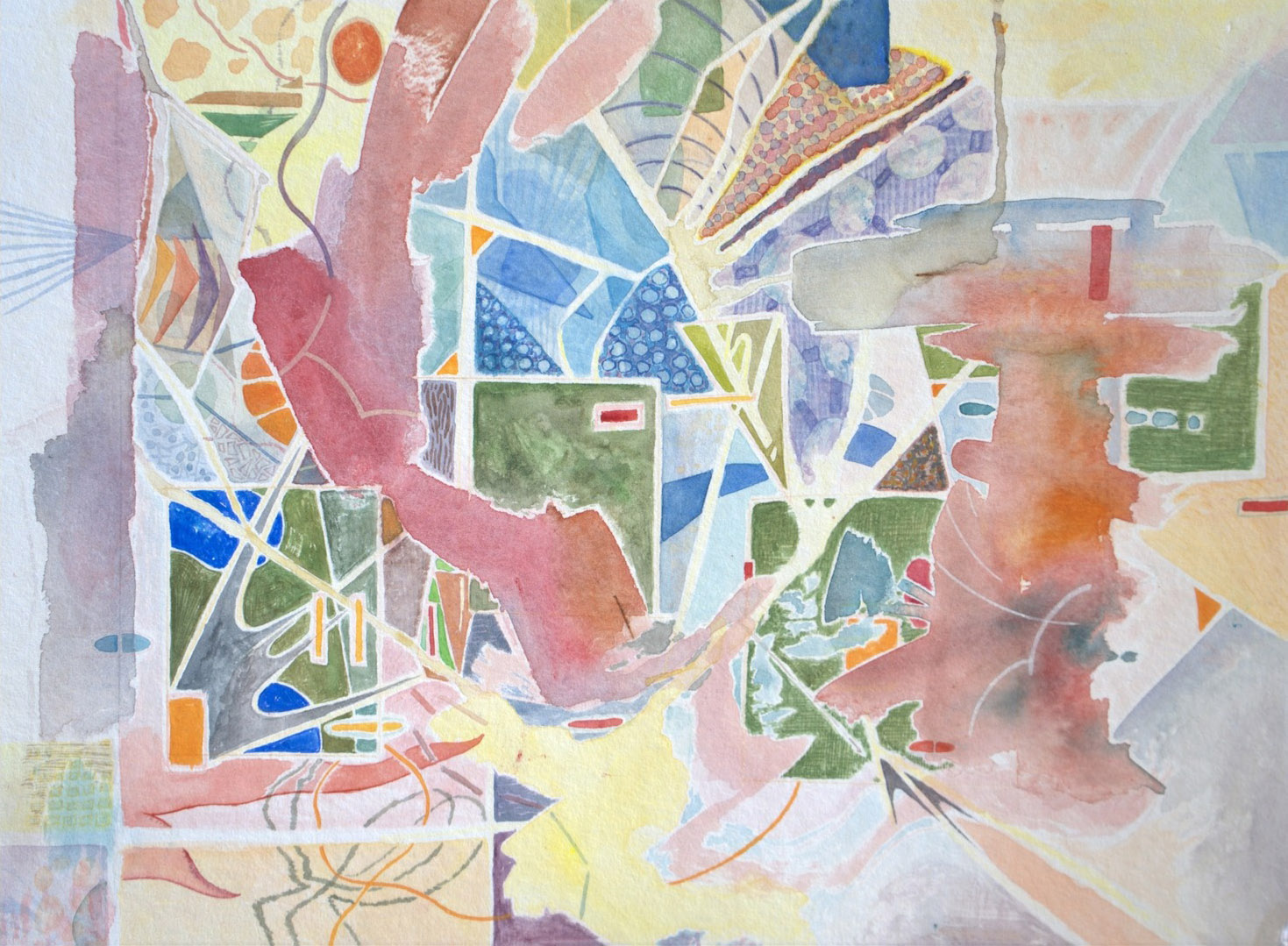

Corbin Paewai-Young
Ear to the Ground
Eyes to the Sky
“Making is a personal manifestation of identity. Everything is compressed into action” - Jack Whitten.1
For Whitten, the physical act of painting held an immeasurably capacious volume. Here, concerning his own practice, he’s referring to “everything” from scientific inquiry, spiritual travails, identity politics, to art history. This is a pivotal belief for me, that in action you can engage with vast bounds of information. That painting can act as an embodied medium for thinking that can help me deal with the world. Thought, material, doing, feeling - these are all bridged in the act of forming, their shapes are not yet defined and explorations remain porous. Ideas around te kore are in play, that void is the first environment, a base of possibility from which I can explore, invent, and learn. Atop this foundation are generative layers, applications of my drawing sensibility that prioritises traversive mark making through the hand.
Accumulations of references drive this work. Various elements interact. They enmesh and intrude on each other, react and respond. Networks develop both inside and between my paintings. As these visual environments develop, their discursive qualities keep me engaged - I feed the paintings and the paintings feed me, themselves, and one another. Ideas are echoed, restaged, and reenacted. Layers of decisions build up, something that can be retraced while the forms produced simultaneously indicate their capacity to keep evolving.
My affection for drawing, for formal qualities like line, shape, and colour, helps me to maintain structure. Whatever I produce has to hold up to the ease and pleasure of looking. This activity of giving shape to these environments that are inherently loose and defined by slippage is where I find vitality. It’s a balancing act that demands I both tighten and slacken the scaffolding of a painting as I try to hoist up its backbone so it may stand up on its own, all the while the architecture of this evolving construction’s component zones/compartments dissolve and bleed. I’m pursuing forms that yield both stability and flux, an active state characterised by potential.
To make a mark, I may be informed by a prompt, sometimes a direct/specific idea (often an art historical reference or natural phenomena2) and other times a more abstract notion or feeling. Such prompts will also appear during the mark making, diverting my course. These references operate as pivot points from which my searching hand will meander as associations bloom, tangle, and crowd; my task is observation and navigation of this seascape. As I work, I have to be willing to simplify while my instincts demand further complications, to continually organise while being open to incoherence, and be comfortable with creation through negation. The heart of the work lies in the activity of making and my trust in this process, it’s a practice of becoming.
1 Jack Whitten, Notes from the Woodshed, ed. Katy Siegel (Germany: Hauser & Wirth Publishers, 2018), 414.
2 For instance, The Dots (2021) references André Derain’s The Turning Road, L'Estaque (1906) and the drawing of Vincent Van Gogh. Other times I’ve referenced things like mist and waves.



